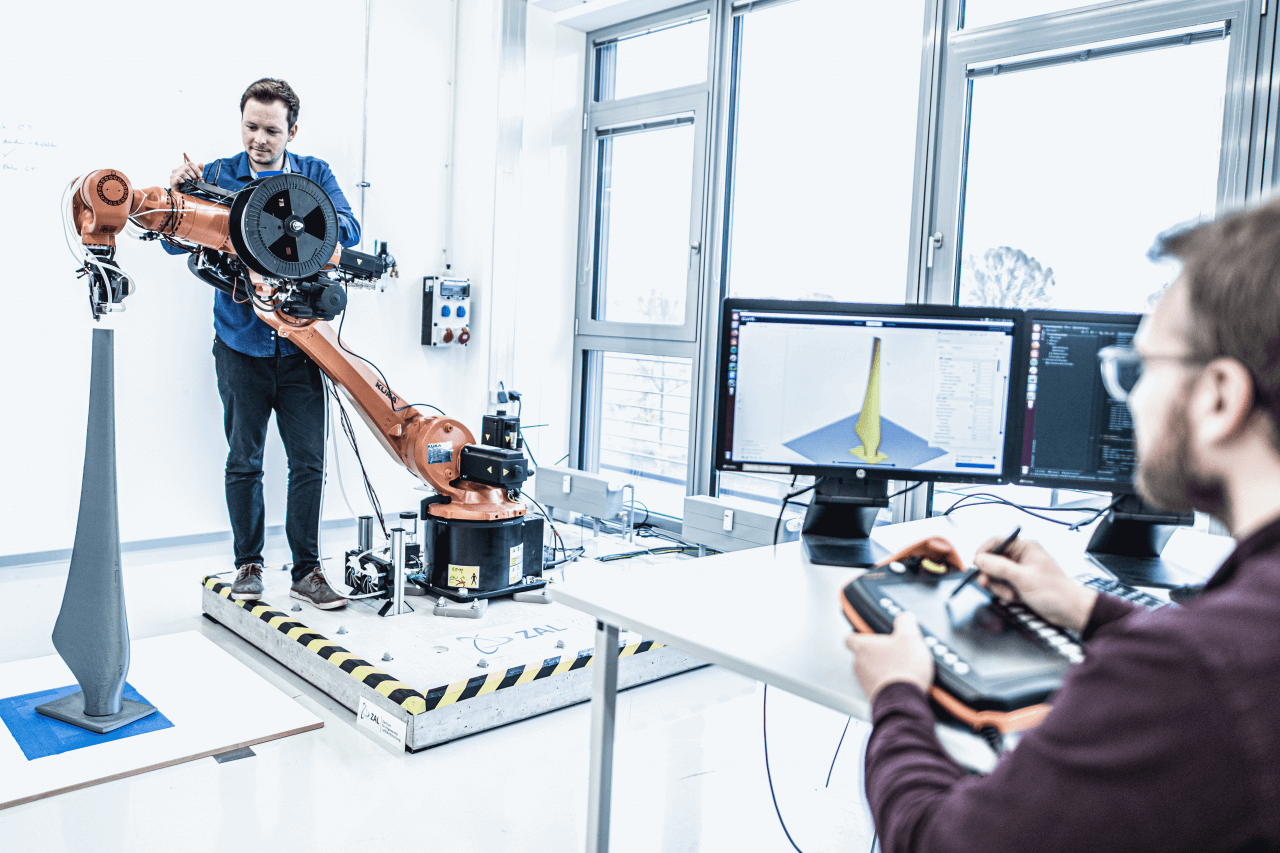Robotics and additive manufacturing in one? Robot-guided additive manufacturing (RAM), a hybrid manufacturing process, combines the best of both worlds. Our engineers use robot kinematics for this. It results in greater freedom of movement than with conventional printing processes. For hybrid manufacturing, this opens up new possibilities, such as novel designs and manufacturing techniques for combining components.
But how does it work? The robot “prints” a component onto an existing component. The process is particularly useful when large components are combined with small functional add-ons. In common AM, this is typically done by bonding or riveting. Due to the flexibility of the robot, RAM also prints on curved surfaces. This greatly increases the design scope for complex and varied add-on parts. Thus, we print individually adapted components directly onto the existing component – completely automated.
Non planar printing
In non planar printing, the component is broken down into curved layers that reproduce the surface of the base component. Within these layers the path planning takes place. This means that the experts define the tool path. The tool, the extruder on the robot, is always vertical to the surface. The procedure could already be used for cylindrical surfaces.
Project HuTAb
In the HuTAb project, ZAL GmbH and its partners are further developing non planar printing and the RAM system. The project is funded by the Federal Ministry of Economics and Energy as part of the aviation research program LuFo V-3.
Do you want to see more? Click here for the video in which the robot prints the HuTAb project logo on a cylindrical surface.





